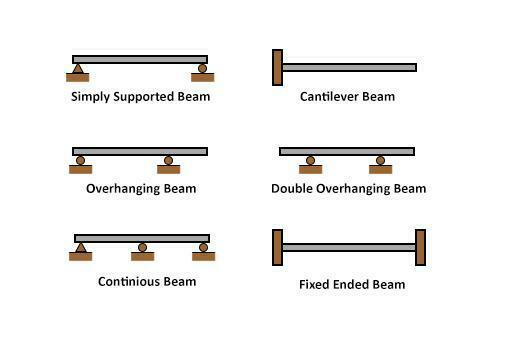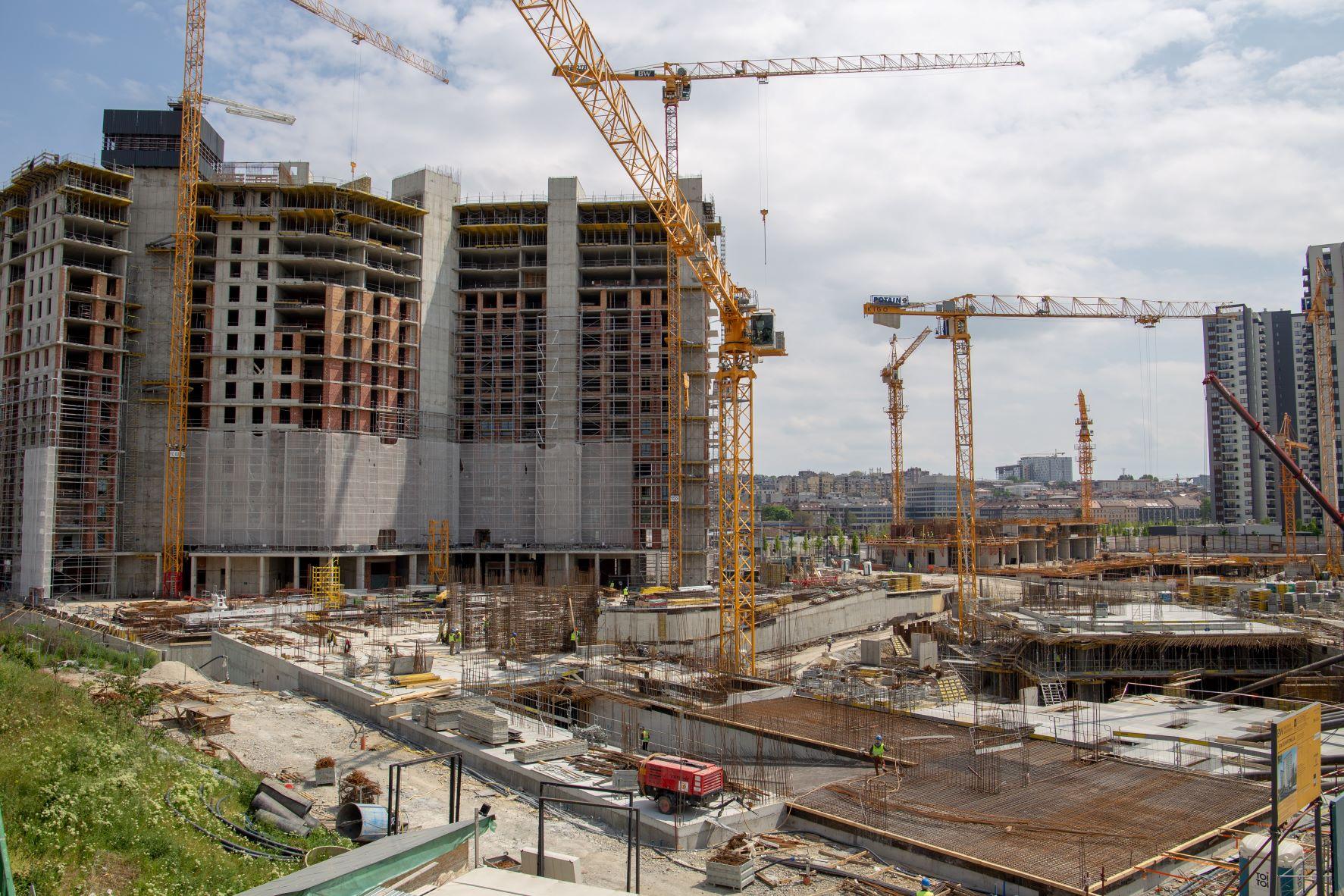What is Beam?
In building construction, a beam is generally a horizontal load-bearing structural element that resists all the horizontal or lateral loads applied by the floor slab, lintel, columns, walls, and other building elements to the beam. A beam basically runs horizontally along the main walls of the building at the floor height and supports the structural frame.
Types of Beam used in construction
There are different types of beams which are classified on the following basis:
- Based on support condition
- Based on construction materials
- Based on cross-section shapes
- Based on the geometry
- Based on equilibrium conditions
- Based on the method of construction
- Others
Types of Beam based on support condition
- Simply supported: A beam is said to as being simply supported if it is supported or resting easily on the supports at both ends. See fig. below.
- Cantilever Beam: A beam is referred to as a cantilever if one end of it is fixed and the other end is free. Figure below.
- Over-Hanging Beam: A beam is referred to be an overhanging beam if its terminal section extends beyond the support. Figure below.
- Continuous Beam: A continuous beam has more than two supports, as indicated in figure.
- Fixed-Ended Beam: A fixed beam has both of its ends fixed or integrated into walls. Another name for a fixed beam is an integrated or encastred beam

Type of load acting on a beam
A beam is normally horizontal and the loads acting on the beams are generally vertical. The following are the important types of load acting on a beam:
1. Concentrated or point load,
2. Uniformly distributed load,
3. Uniformly varying load.
- Concentrated or Point Load:- A concentrated load is considered to act at a point, although in practice it must be distributed over a small area. In Fig. 1, W shows the point load
- Uniformly Distributed Load:- A uniformly distributed load is spread over a beam in such a manner that the rate of loading w is uniform along the length (i.e., each unit length is loaded to the same rate) as shown in Fig. 2. The rate of loading is expressed as w N/m run. Uniformly distributed load is, represented by u.d.l. For solving the numerical problems, the total uniformly distributed load is converted into a point load, acting at the center of the uniformly distributed load.
- Uniformly Varying Load:- A uniformly varying load is spread over a beam in such a manner that the rate of loading varies from point to point along the beam as shown in Fig. 3 in which the load is zero at one end and increases uniformly to the other end. Such load is known as a triangular load. (Source: Strength of Material, by R.K Bansal)



Types of Beam based on construction material
- Composite Beams
- Timber beams
- Steel Beams
- Reinforced Concrete Beams
Types of Beam Based on Cross-Section
- L-section beam
- T-section beam
- Rectangular beam
Types of Beam based on Geometry
- Tapered beam
- Curved beam
- Straight beam
Types of Beam Based on Equilibrium
- Statically indeterminate beam
- Statically Determinate Beam
Types of Beam Based on the method of construction
- Prestressed Concrete Beam
- Precast Concrete Beam
- Cast In-situ Concrete Beam
Others
- Girder
- Deep Beam
Types of support conditions in Beams
- Roller
- Pinned
- Fixed
What is the purpose of a beam?
Beams serve as structural components, transferring loads from the slab to the columns. This entails installing transfer beams to convey the weight from one load-bearing wall to another. They are frequently horizontal members. A beam’s purpose is to support walls and prevent a concrete slab from becoming loaded.
What You Need To Know About Beam
- Beams are typically horizontal structural components that support loads that are perpendicular to their longitudinal direction.
- The shapes of beams might be square, rectangular, T-shaped, I-shaped, or H-shaped.
- The beam’s minimum width is 200 mm.
- Bending and shear forces are carried or resisted by the beam.
- The support of the beam determines its classification.
- The beam distributes the weight of a building’s slabs, ceiling, floor, and roof to its columns.
- A structure cannot be built without a column.
- Beams have longitudinal steel on two faces that are used to withstand bending moments, whereas stirrups or inclined beams resist vertical loads.
- The beam does not fail or collapse suddenly without offering any warning, such as deflection or fracture.
- The column provides support for beams at either one end or both ends.
- The percentage of steel used in a beam can range from 0.2% to 2.5%.
- In RCC construction, beams are typically cast with slabs; therefore, extra caution must be used when pouring concrete into and curing the beams.
H-beams, one of the list’s strongest steel beams, are made up of horizontal components, with the vertical beams serving as the web. Popular in building or civil engineering projects, the flanges and web combine to form a cross-section that resembles the letter “H.”
Questions and solutions related to beams (structure) will be added in the coming days, as well as detailed information about the types of beams.












2 Responses
Well explained with examples.
Would be more explanatory if figures for all beam types have been shown
Sure, we will definitely add the figures for all the types of beams in the coming days.